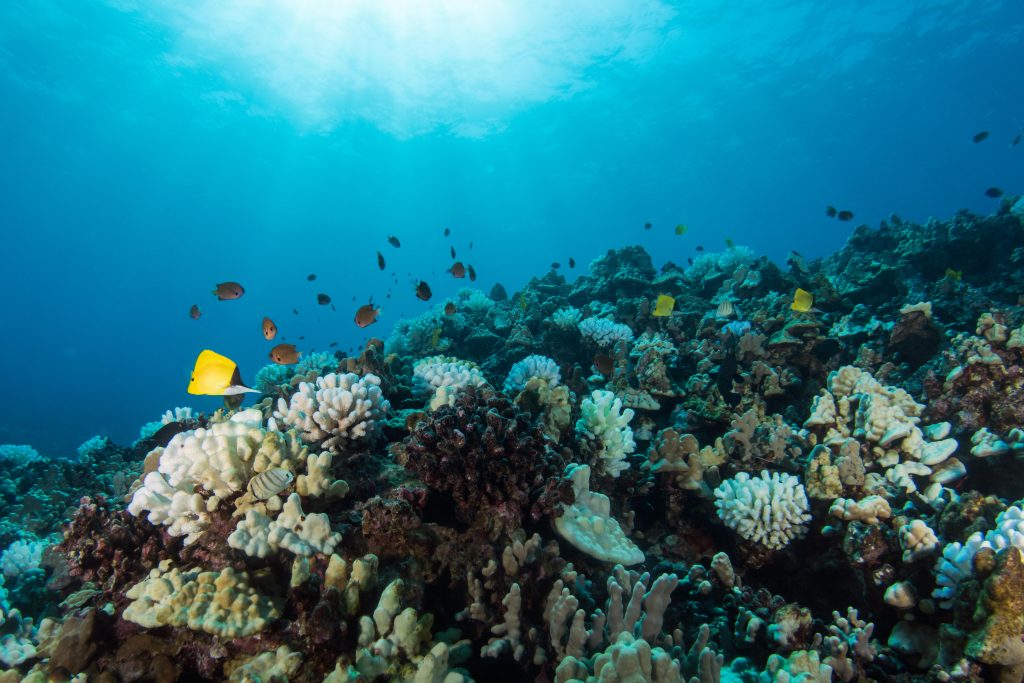- Joined
- Jan 28, 2013
- Messages
- 94,823
- Reaction score
- 28,343
- Location
- Williamsburg, Virginia
- Gender
- Male
- Political Leaning
- Independent
Maybe you haven't paid your bill.
Coral Reefs in West Hawaiʽi Showing Signs of Recovery
January 22, 2019, 12:32 PM HST · Updated January 22, 12:32 PM
16 Comments
- Text Size:
[*=center]A
[*=center]A
[*=center]A
Nearly four years after the worst bleaching event in the state’s history, coral reefs in West Hawaiʽi are stabilizing and poised to recover, according to scientists from The Nature Conservancy.
 Photo: The Nature Conservancy of Hawai‘i.
Photo: The Nature Conservancy of Hawai‘i.
Higher than usual ocean water temperatures in 2015 caused the first statewide coral bleaching event. TNC surveys revealed that an average of 60% of corals in West Hawaiʻi bleached, with some reefs experiencing up to 90% mortality. Corals bleach under stress, and severe or prolonged stress can lead to death.
For the last three years, TNC scientists have studied West Hawaiʻi’s coral reefs to identify the most resilient, meaning they can resist or recover from the stress of warmer ocean temperatures.
“Bleaching events like what occurred in 2015 can overstress a coral reef to the point where it may never recover,” said Dr. Eric Conklin, director of marine science for TNC’s Hawaiʻi program. “We surveyed over 14,000 coral colonies at 20 sites along the West Hawaiʻi coast from Kawaihae to Keauhou and were thrilled to see that many of the area’s reefs have stabilized, which is the first step toward recovery.”
Surveys showed that many of the most resilient reefs are in remote areas with limited shoreline access and exposure to human impacts. These reefs had lots of corals and little or no coral disease, and there was evidence that new corals were beginning to grow.
The least resilient sites all had multiple “stressors,” including fishing pressure, land-based pollutants and runoff. “Interestingly, the number of stressors affecting an area, not the severity of a single one, was the most important factor,” said Kim Hum, the Conservancy’s marine program director. “Reefs that are fighting the impacts of several stressors are more susceptible to temperature stress, making them more likely to bleach and less able to recover if they do.”. . . .

Higher than usual ocean water temperatures in 2015 caused the first statewide coral bleaching event. TNC surveys revealed that an average of 60% of corals in West Hawaiʻi bleached, with some reefs experiencing up to 90% mortality. Corals bleach under stress, and severe or prolonged stress can lead to death.
For the last three years, TNC scientists have studied West Hawaiʻi’s coral reefs to identify the most resilient, meaning they can resist or recover from the stress of warmer ocean temperatures.
“Bleaching events like what occurred in 2015 can overstress a coral reef to the point where it may never recover,” said Dr. Eric Conklin, director of marine science for TNC’s Hawaiʻi program. “We surveyed over 14,000 coral colonies at 20 sites along the West Hawaiʻi coast from Kawaihae to Keauhou and were thrilled to see that many of the area’s reefs have stabilized, which is the first step toward recovery.”
Surveys showed that many of the most resilient reefs are in remote areas with limited shoreline access and exposure to human impacts. These reefs had lots of corals and little or no coral disease, and there was evidence that new corals were beginning to grow.
The least resilient sites all had multiple “stressors,” including fishing pressure, land-based pollutants and runoff. “Interestingly, the number of stressors affecting an area, not the severity of a single one, was the most important factor,” said Kim Hum, the Conservancy’s marine program director. “Reefs that are fighting the impacts of several stressors are more susceptible to temperature stress, making them more likely to bleach and less able to recover if they do.”. . . .







